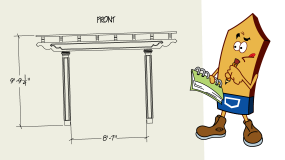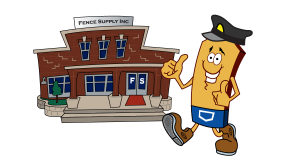Chain Link Fence for Perimeter Security
Security is not the absence of danger, but the presence of things that will keep us away from it. And what better way to keep the danger at bay than a chain link fence? Here is a collection of the different advantages of chain link fences for security purposes:
Ease of installation
Chain link fences are fairly easy to put up since they already come as ready-to-install materials. All you need to do is roll them out, cut them, and attach them into your fence frames and posts. No complicated measurements are involved in their installation since all you need to do is match their measurements to that of the fence. And they don’t need any finishing to improve their serviceability or to prolong their life.
Lesser overall cost
Chain link fences excel in their economic value. They cost less per fence-foot than most other fence types. Their ease of installation also guarantees that minimal labor is needed in setting them up. They also don’t need any finishing touches, so you will save the costs of painting and staining. Chain link fences also need minimal to no maintenance after installation, which adds up additional savings over time.
Added security through visual transparency
With chain link fences, you can see exactly what is going on in your property at all times. Sometimes criminals use the privacy of other kinds of fences to their advantage, because privacy fences makes it easier to hide. If security is a big factor in your fence choice, consider the high visibility chain link fences give in addition to securing your property.
Customizable measurements
The measurement of chain link fences can be customized to your needs. You can choose from different wire gauges and mesh sizes in accordance with your requirements. Below is a list of suggested wire gauges and mesh sizes to give you an idea on how to purchase chain links according to your needs:
|
Purpose |
Wire Gauge |
Mesh Size |
|
Residential |
No. 11 |
2 inches |
|
Commercial |
No. 9 |
1 to 2 inches |
|
High Security |
No. 6 |
1 inch and below |
Customization
Chain link fences are highly customizable. They can be outfitted with any number of features and accessories to add to the security of your fence. You can add barbed wire on top or your chain link fences, or you can easily charge them with electric current. Chain link fences are also most compatible with motion triggered flood lights due to its visual transparency.
Chain link fences offer a great number of advantages when it comes to security, economy, customization, and many other factors. Consider building yourself a chain link fence!Chain link is indeed a better choice and with these advantages it can be concluded that it is one of the top choices for security, economic, aesthetics, and whatever other purposes your fence may serve.

 Cedar Fence Options
Cedar Fence Options Western Red Cedar Fence Alternatives
Western Red Cedar Fence Alternatives Treated Pine Wood Fencing
Treated Pine Wood Fencing Spruce Wood Fencing (commonly referred to as SPF)
Spruce Wood Fencing (commonly referred to as SPF)


